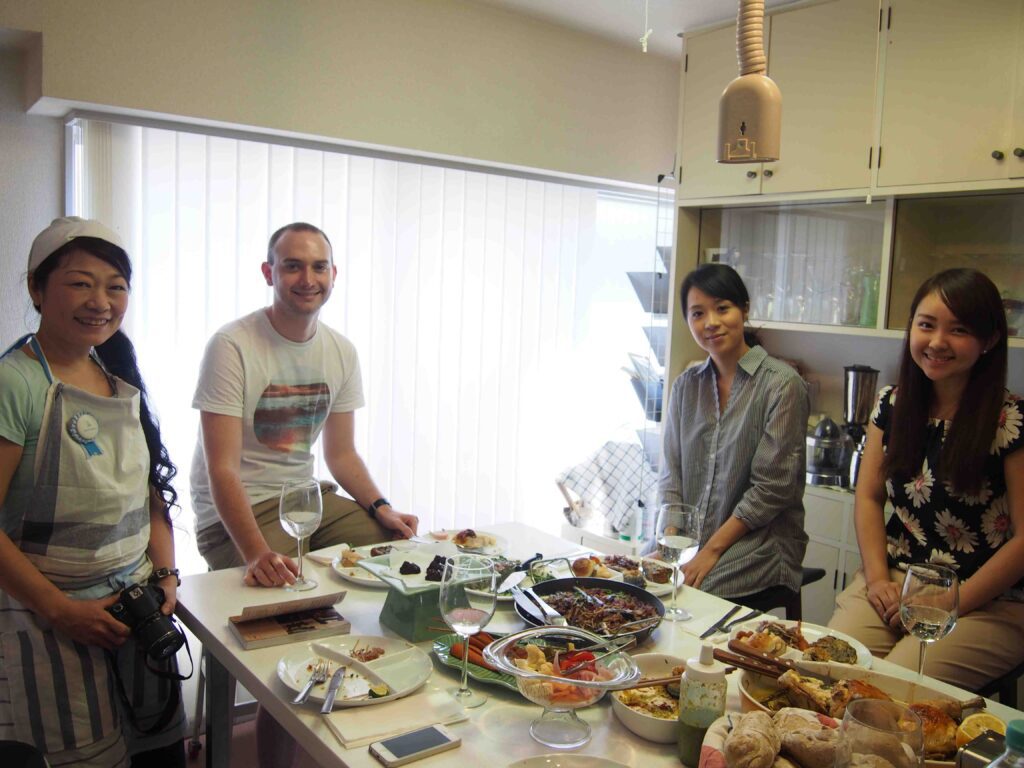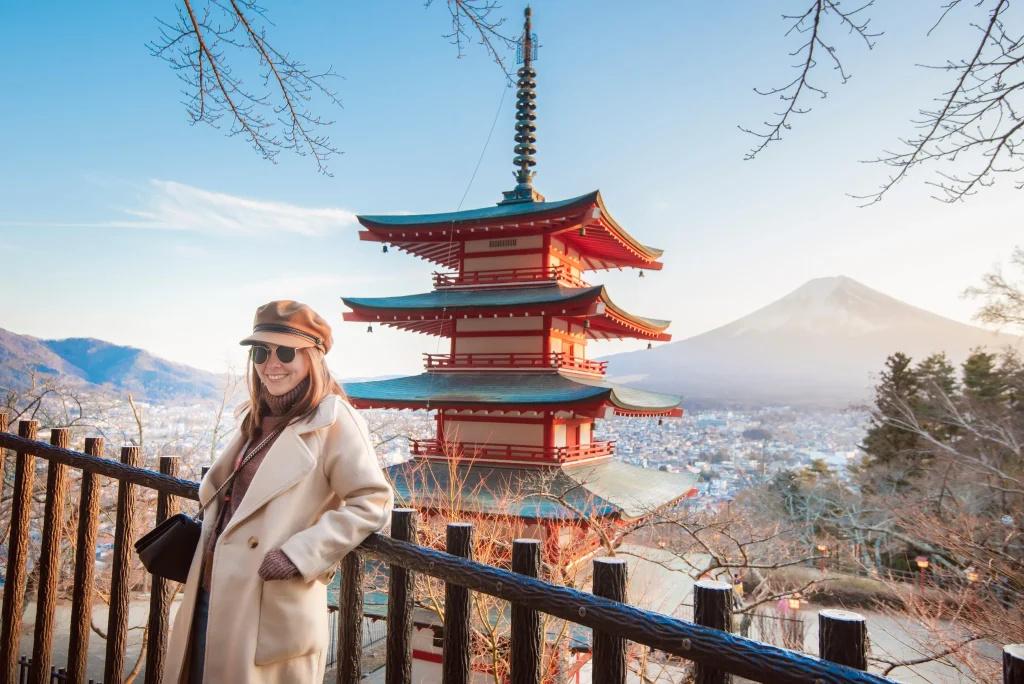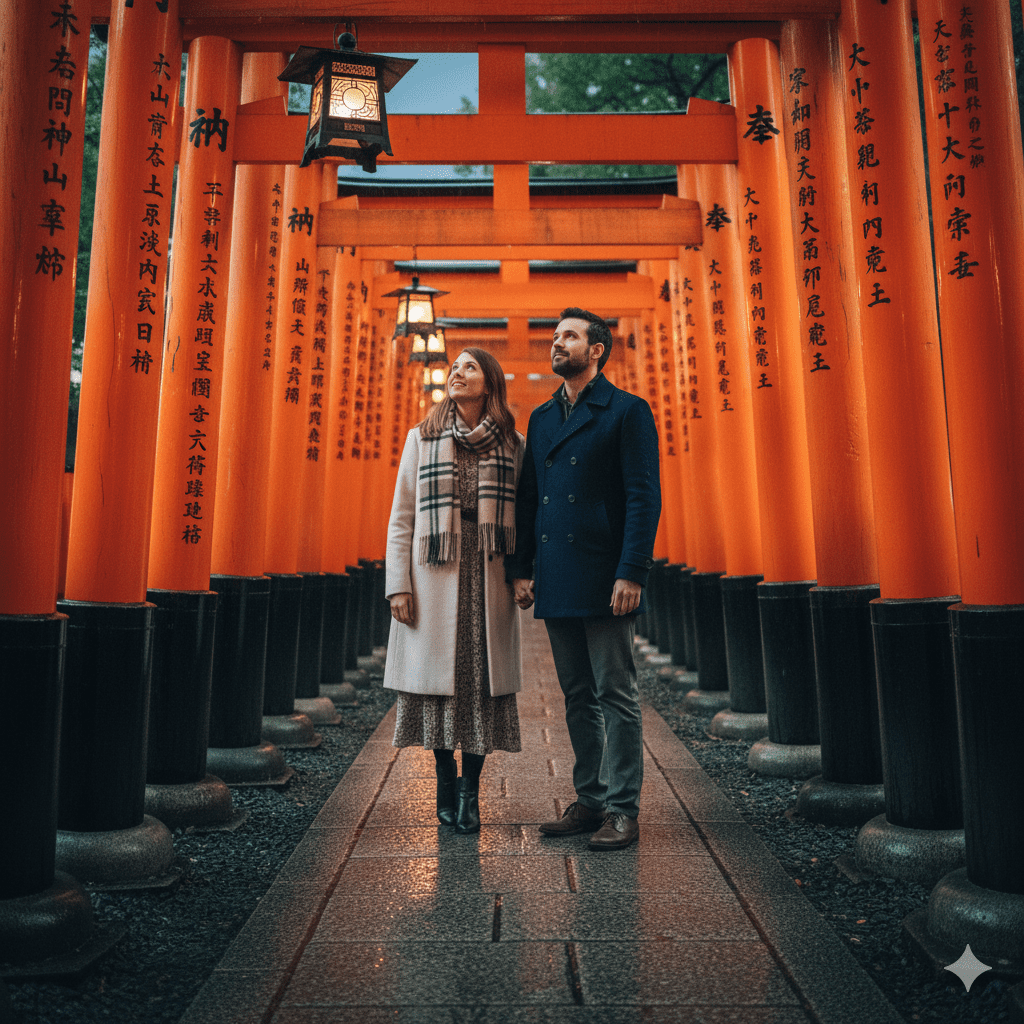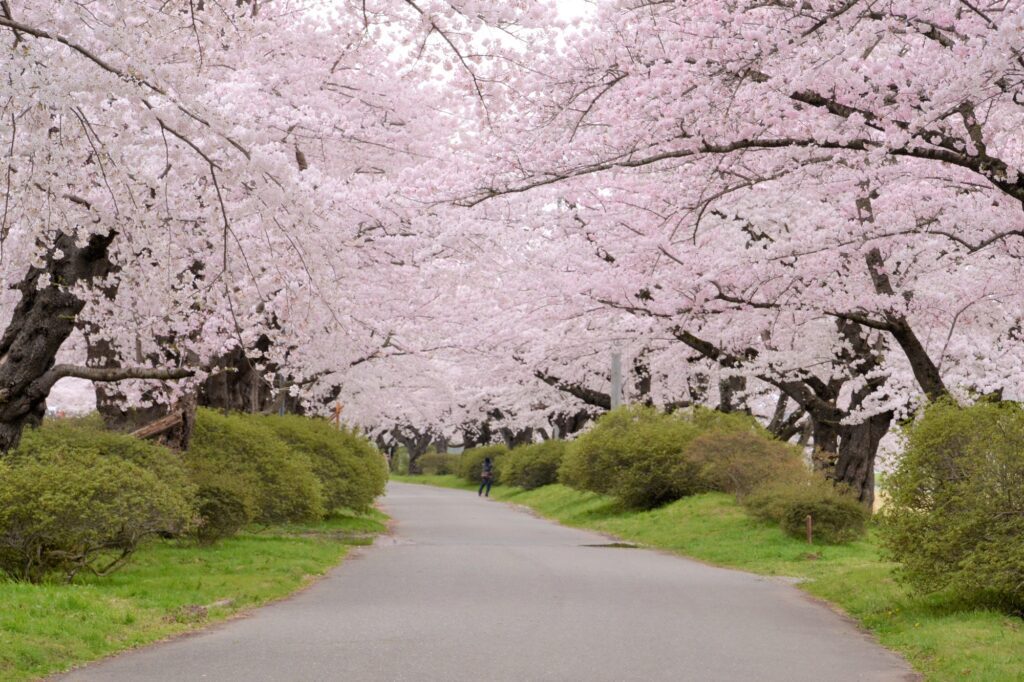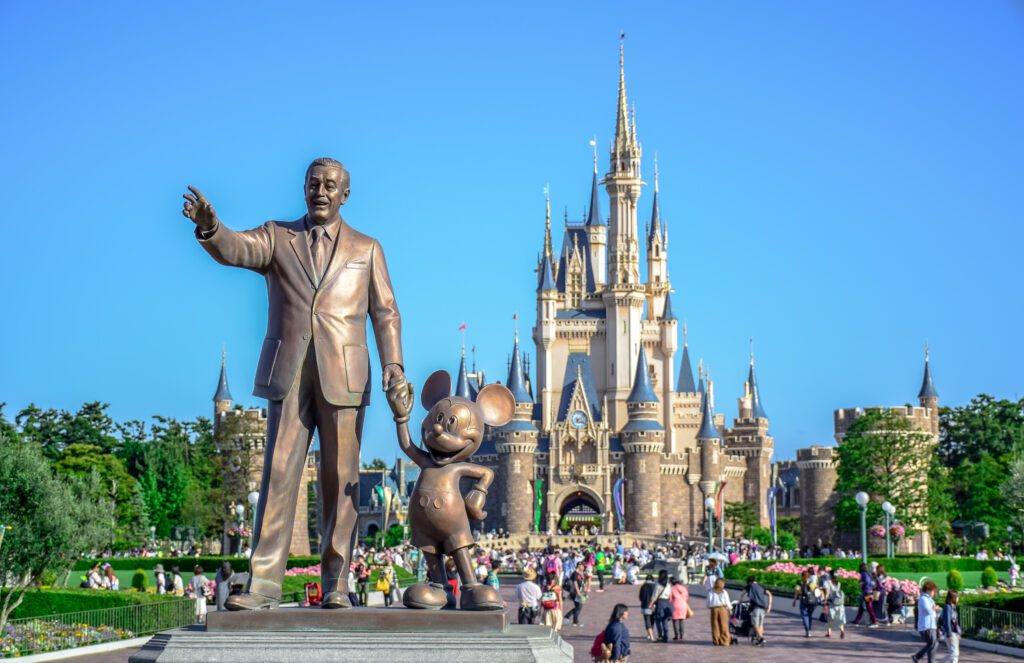Japan
Japan is a vast archipelago of islands in East Asia, in the Pacific Ocean. The four main islands that make up Japan are Hokkaido, Shikoku, Kyushu, and Honshu, the largest and most populated island. In addition, there are thousands of smaller islands. Most of Japan’s islands are mountainous, and many are volcanic. The highest mountain in the country is Mount Fuji, an active volcano.
Japan, also known as the “Land of the Rising Sun,” is famous for its unique culture and rich history. Many of its cities offer an incredible variety of tourist attractions that draw travelers from around the globe. Tokyo, the capital, showcases the fusion of old and new, with skyscrapers and bustling streets alongside museums, galleries, temples, and pagodas. Kyoto, considered the cultural heart of Japan, is renowned for its gardens and numerous temples, while Nara, Japan’s first capital, was once a major Buddhist center.
Beyond the cities, Japan boasts numerous national parks, where visitors can discover crystal-clear lakes, hot springs, and striking volcanic landscapes. One of the most celebrated times to visit is during the cherry blossom season, when the country is transformed into a breathtaking sea of pink and white blossoms.
Articles and Guides about Japan
Frequently Asked Questions about Japan
The time most recommended for traveling in Japan is usually spring or autumn when weather conditions are the most comfortable, although it is possible to travel in the destination throughout the whole year – each season offers unique attractions of its own and new experiences!
A long trip in Japan can cost not a little, especially if you want to manage and see as much as possible from the country.
If you want to prepare for the trip like professionals and ensure you’re not missing anything.
The local currency in Japan is the Japanese Yen ¥ (YEN).
One yen is approximately equal to $0.0065 USD.
Visa requirements depend on your nationality. Many countries have visa-free access for short-term tourism, but it’s important to check the latest entry requirements before your trip.
Japanese culture places a strong emphasis on respect, politeness, and harmony. Simple gestures like bowing, removing your shoes before entering a home or traditional inn, and speaking softly in public spaces are deeply appreciated. Understanding these cultural norms will help you connect better with locals and avoid unintentional disrespect.
Japanese culture places a strong emphasis on respect, politeness, and harmony. Simple gestures like bowing, removing your shoes before entering a home or traditional inn, and speaking softly in public spaces are deeply appreciated. Understanding these cultural norms will help you connect better with locals and avoid unintentional disrespect.
Japan offers several options for travelers, including SIM cards and pocket Wi-Fi rentals. While SIM cards are available at airports and electronics stores, they can sell out quickly or require Japanese language setup. Ordering your SIM online in advance guarantees compatibility with your phone and immediate data access once you arrive.
Get your Japan SIM card here with easy setup and reliable coverage>>
While Japan is one of the safest countries in the world, travel insurance is still essential. Medical care in Japan is excellent but can be expensive for foreigners, especially in emergency cases. Travel insurance also covers trip cancellations, lost luggage, and unexpected delays — which are more common than you’d think.
For peace of mind during your Japan trip, consider getting coverage through VisitorsCoverage — they offer flexible plans trusted by international travelers.
Japan - The Short Guide
Weather in Japan
Japan experiences four distinct seasons, each offering unique travel experiences, depending on the region and time of year.
Spring (March–May): A favorite season for visitors, spring brings mild temperatures (10–20°C / 50–68°F) and beautiful cherry blossoms across the country. Tokyo, Kyoto, and Osaka are especially scenic during late March and early April, when sakura trees bloom in parks, temples, and along riverbanks.
Summer (June–August): Often hot and humid, with temperatures exceeding 30°C (86°F), especially in cities like Tokyo and Osaka. This season includes the rainy period (tsuyu) in June, followed by lively summer festivals, fireworks, and vibrant beach scenes in Okinawa and southern Japan.
Autumn (September–November): Widely considered the best time to visit Japan, with comfortable weather (15–25°C / 59–77°F), clear skies, and breathtaking autumn foliage in places like Nikko, Kyoto, and the Japanese Alps.
Winter (December–February): Northern regions, such as Hokkaido and Tohoku, experience heavy snow and sub-zero temperatures, making them ideal for skiing and snow festivals. Central and southern cities, such as Tokyo and Hiroshima, remain cool but rarely experience snow.
Here you can see the weather by month >
Japan Travel Guide – Flights to Japan
Japan is accessible via several major international airports. Tokyo has two key hubs: Narita International Airport (NRT) and Haneda Airport (HND). Kansai International Airport (KIX) serves Osaka and western Japan. Other major gateways include Chubu Centrair (Nagoya), Fukuoka Airport, and New Chitose Airport in Sapporo (Hokkaido).
From these airports, travelers can easily connect to domestic flights and high-speed trains (Shinkansen) to explore destinations across Japan, including Hiroshima, Sapporo, Nagano, and Okinawa.
Find the best flights to Japan with Kiwi.com — compare routes, prices, and airlines easily>>
Japan Travel Guide – What to Do in Japan
Japan offers a diverse range of experiences for travelers of all kinds. Culture seekers can explore ancient temples in Kyoto, historic castles in Himeji, and traditional districts like Gion. Nature lovers can hike Mount Fuji, enjoy the bamboo groves of Arashiyama, or visit scenic spots like Hakone and the Japanese Alps.
Urban explorers will find excitement in Tokyo’s futuristic neighborhoods, such as Shibuya and Akihabara, while enjoying vibrant nightlife, fashion, and cutting-edge technology. For a peaceful retreat, visit traditional onsen towns like Beppu or Kinosaki.
Japan also hosts a rich calendar of cultural festivals, such as Gion Matsuri in Kyoto and the Nebuta Festival in Aomori. Regional food specialties—from sushi in Tokyo to takoyaki in Osaka—make the culinary journey just as thrilling as the sights.
Find top-rated tours and activities across Asia with Viator — great experiences, great prices.
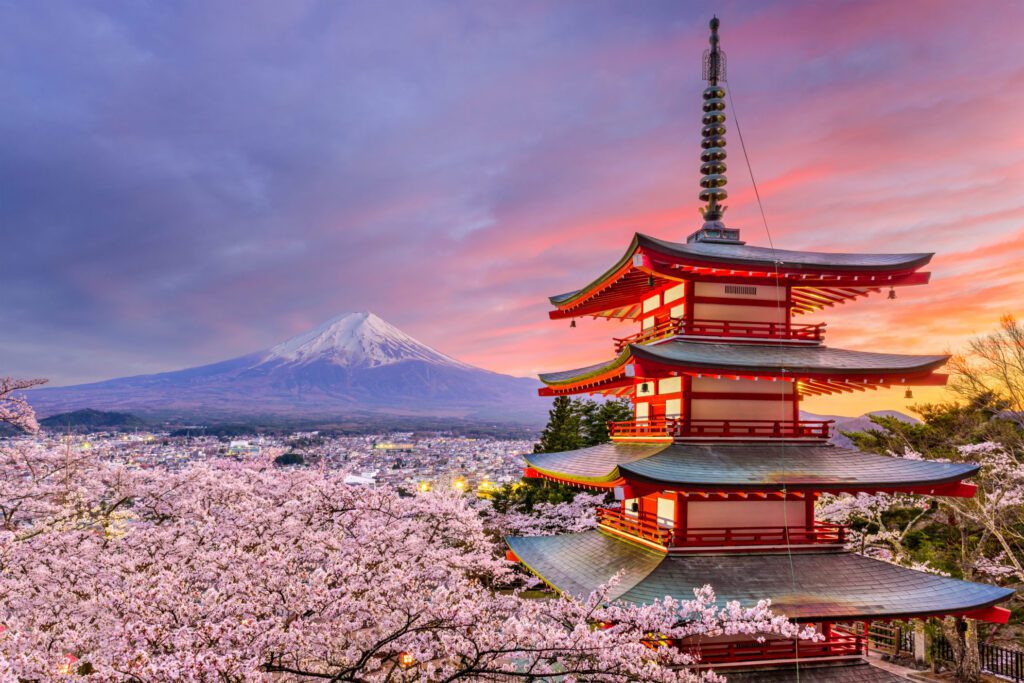
What to Do in Japan with Kids
Japan is extremely family-friendly, offering a range of interactive and educational attractions. Tokyo Disneyland and DisneySea provide magical experiences, while Universal Studios Japan in Osaka delivers movie-themed thrills.
In Tokyo, kids can enjoy Ueno Zoo, teamLab’s digital art exhibits, and the Ghibli Museum. In Kyoto, try dressing in a traditional kimono or participating in tea ceremonies adapted for young travelers.
Other child-friendly activities include riding the bullet train, visiting aquariums in Okinawa or Osaka, and exploring nature in Nara Park, where children can feed the freely roaming deer.
Recommended Itinerary in Japan: A classic 10 to 14-day itinerary might include:
- Tokyo (3–4 days): Shibuya, Shinjuku, Asakusa, Akihabara, and a day trip to Nikko or Mount Fuji.
- Kyoto (3–4 days): Fushimi Inari Shrine, Kinkaku-ji, Gion district, and Arashiyama Bamboo Forest.
- Osaka (2–3 days): Dotonbori, Osaka Castle, Universal Studios Japan.
- Optional add-ons: Nara, Hiroshima, Miyajima Island, or Sapporo (in winter).
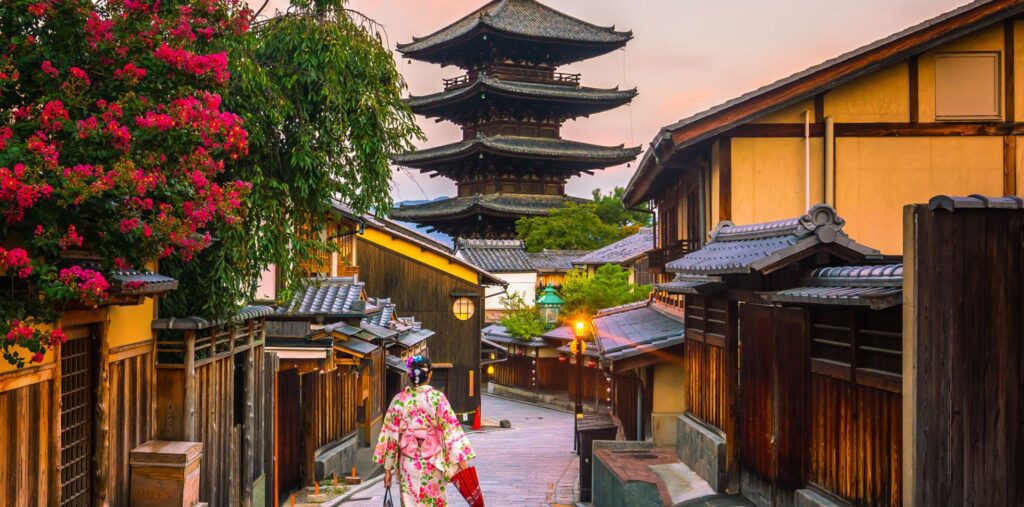
Japan Travel Guide – Where to Stay in Japan
Japan offers accommodations for every budget and style. Major cities have luxury hotels, business hotels, budget hostels, and capsule hotels. For a unique experience, stay in a traditional ryokan (Japanese inn) with tatami mats and hot spring baths.
Popular areas include:
- Tokyo: Shinjuku, Shibuya, and Asakusa for easy access to transport and attractions.
- Kyoto: Gion or Higashiyama for a traditional atmosphere.
- Osaka: Namba or Umeda for shopping and entertainment.
Budget travelers may opt for guesthouses or capsule hotels, while rural areas offer charming farm stays and temple lodgings.
Japan Travel Guide – Shopping in Japan
Shopping in Japan is a cultural experience in itself. Tokyo’s districts like Harajuku and Ginza offer everything from high fashion to quirky collectibles. Electronics and anime goods are best found in Akihabara.
Kyoto specializes in crafts, including ceramics, textiles, and traditional sweets. Osaka is a haven for food markets and bargain fashion, while Fukuoka and Sapporo offer excellent local products and shopping malls.
Don’t miss Japanese department stores, 100-yen shops, and convenience stores, where you can find unique souvenirs and high-quality items at great value.
Attractions in Japan
Japan’s attractions range from historic landmarks to cutting-edge entertainment. Top sights include:
- Cultural: Fushimi Inari Shrine (Kyoto), Itsukushima Shrine (Miyajima), Himeji Castle, and Nijo Castle.
- Nature: Mount Fuji, Lake Kawaguchi, Japanese Alps, and cherry blossoms in parks like Ueno and Maruyama.
- Entertainment: teamLabs Planets (Tokyo), Studio Ghibli Museum, Legoland (Nagoya), and hot spring theme parks like Yunessun in Hakone.
Whether you’re drawn by history, technology, nature, or food—Japan delivers an unforgettable journey for every traveler.
Tokyo (東京) – The Dynamic Capital
Tokyo is a sprawling metropolis where tradition meets cutting-edge modernity. From neon-lit districts like Shibuya and Shinjuku to serene temples such as Sensō-ji in Asakusa, the city offers endless contrasts. Visitors can enjoy futuristic technology, fashion, gourmet dining, and world-class museums, while still finding pockets of old Japan in traditional gardens and quiet shrines.
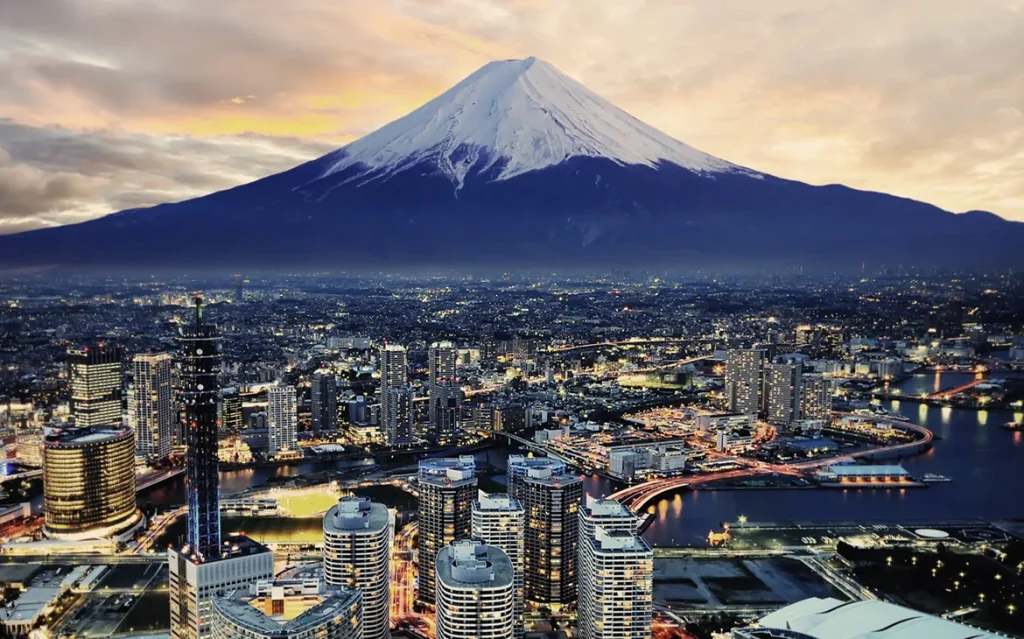
Kyoto (京都) – The Cultural Heart
Once the imperial capital, Kyoto is famed for its historic temples, traditional tea houses, and stunning gardens. With over 2,000 shrines and temples, including the Golden Pavilion (Kinkaku-ji) and Fushimi Inari Shrine with its iconic red torii gates, Kyoto represents the soul of Japanese culture. It’s also the best place to experience geisha districts and seasonal beauty, especially during cherry blossom and autumn foliage.
Osaka (大阪) – The Kitchen of Japan
Osaka is vibrant, bold, and known as Japan’s culinary capital. Street food favorites like takoyaki (octopus balls) and okonomiyaki (savory pancakes) dominate neighborhoods such as Dotonbori, where neon signs and nightlife create a lively atmosphere. Beyond food, the city boasts Osaka Castle, Universal Studios Japan, and friendly locals who give the city a warm, approachable feel.
Hiroshima (広島) – A City of Peace and Resilience
Hiroshima is world-known for its tragic history as the first city hit by an atomic bomb. Today, it’s a symbol of peace and renewal, with the Peace Memorial Park and Museum offering moving experiences. Nearby, the island of Miyajima with its floating torii gate at Itsukushima Shrine is one of Japan’s most iconic sights, making Hiroshima a blend of reflection and natural beauty.
Sapporo (札幌) – Gateway to Hokkaido
Located in the north on Hokkaido Island, Sapporo is famous for its snow festivals, beer, and winter sports. The Sapporo Snow Festival in February draws thousands of visitors to admire massive ice and snow sculptures. In summer, the surrounding mountains and fields of flowers showcase Hokkaido’s natural charm. The city is also home to Japan’s oldest beer brand, Sapporo Beer, and a lively food scene with specialties like miso ramen.

